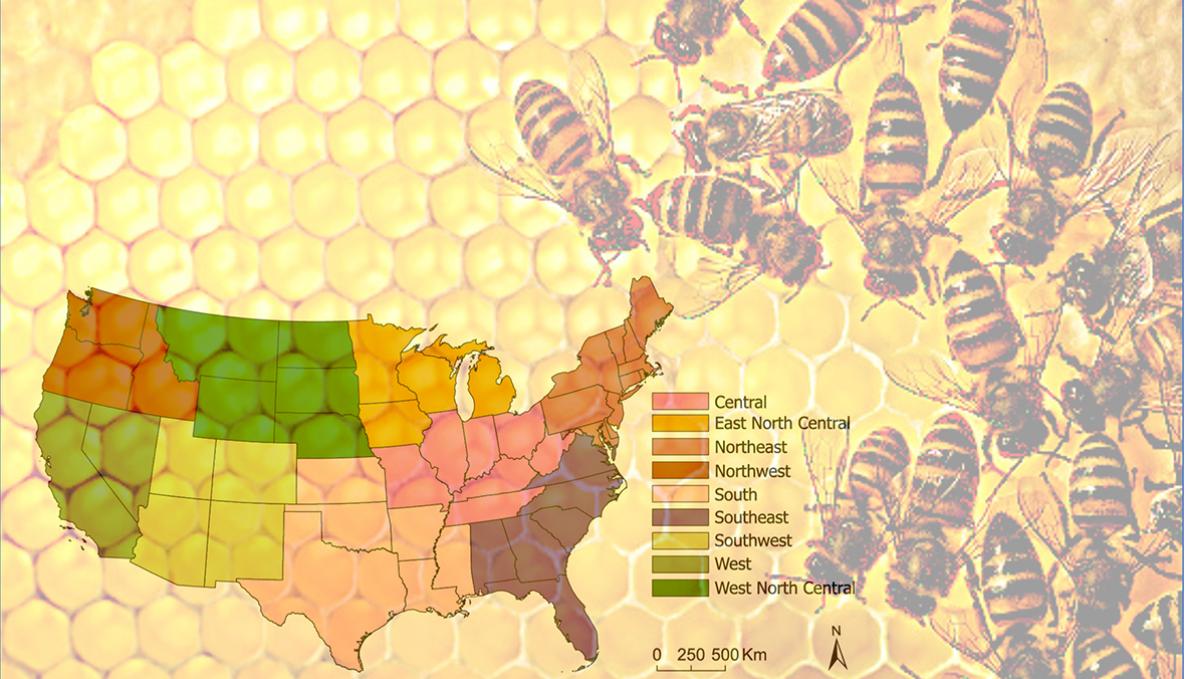A study published in Scientific Reports, as part of a special issue devoted to Insect decline and extinction, pinpoints three important factors associated with honey bee colony loss

What are the main drivers of honey bee decline? Honey bee loss is widespread across the globe, although it varies considerably across geographical areas and seasons. Several stressors, by themselves and in combination, contribute to the decline; among them, parasitic mites, pesticide exposure, and extreme weather events appear to be the main drivers. This is one of the key findings of a study published in Scientific Reports by a team of researchers with strong ties to the Sant’Anna School and its EMbeDS Department of Excellence (Economics and Management in the era of Data Science). The study is part of a special issue devoted to Insect decline and extinction.
The U.S. case
Using several open data sources, the authors retrieved and integrated information on the status of honey bee colonies, the stressors affecting them, the weather and land use conditions across the United States – over a period spanning from 2015 to 2021. Analyzing these data provided strong evidence that Varroa destructor parasitic mites, exposure to pesticides, as well as extreme temperature and precipitation events, significantly impact colony loss.
As Luca Insolia, first author of the study, explains, “Varroa destructor is spread across all continents, and it is strongly associated with honey bee loss. Fighting this mite is one of the most serious challenges for modern beekeeping practices”. Luca Insolia is currently a postdoc at the University of Geneva, after having obtained a PhD in Data Science and collaborating with the EMbeDS Department of the Sant’Anna School. “Varroa destructor mites follow seasonal patterns, and beekeepers could leverage the findings of our study to implement more effective treatments against the mite, as well as to inform several other aspects of beekeeping practices, such as colonies movement, supplementary feeding, overwintering, and so on”.
“Based on the data analyzed in our study, across the United States, overwintering is the most crucial period of the year for colony loss”, says Martina Calovi, corresponding author of the study and faculty in Geography at the Norwegian University of Science and Technology (in 2017 Calovi obtained her PhD in Management at the Sant’Anna School). “Also, while more data will be needed to fully understand the role of climate change, our results on the adverse effects of extreme weather events on honey bees do provide some important preliminary evidence.”
“We used some sophisticated statistical tools in our study – both to combine data released at different spatio-temporal resolutions, and to identify the strongest statistical predictors of honey bee decline”, points out Roberto Molinari, author of the study and faculty in Statistics at Auburn University. “We hope our study will motivate efforts to increase both data collection and data availability to researchers, in the United States as well as other regions of the world, including Italy”.
“Understanding honey bee decline is of utmost importance, because pollinators have key biological and economic roles. Our study is the first to consider a large spatio-temporal scope – the whole U.S. territory, for a period of several years – and multiple potential stressors. Using statistical tools developed by our own group, we were able to shed light on the interplay of biotic and abiotic factors in affecting honey bee colonies”, says Francesca Chiaromonte, author of the study, faculty in Statistics at the Sant’Anna School and at the Pennsylvania State University, and scientific coordinator of EMbeDS.
International collaborations between Italian and U.S. universities
“It is very encouraging” adds Chiaromonte “to see such exciting science produced by outstanding young researchers collaborating across European and U.S. universities and connecting the EMbeDS community to the Pennsylvania State University – where Luca Insolia spent a visiting period, Martina Calovi was a postdoctoral scholar, and Roberto Molinari a visiting assistant professor when we started our study.”



